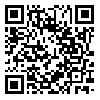BibTeX | RIS | EndNote | Medlars | ProCite | Reference Manager | RefWorks
Send citation to:
URL: http://ijn.iums.ac.ir/article-1-2382-en.html
2- Master degree of pediatric nursing, School of Nursing and Midwifery, Tehran University of Medical Sciences, Tehran, Iran. (Corresponding author). Tel: +989128452236 E-Mail: m-modabber@razi.tums.ac.ir
3- Lecturer, School of Nursing and Midwifery, Tehran, University of Medical Sciences, Tehran, Iran.
4- Lecturer, School of Management and Information Technology, Iran University of Medical Sciences, Tehran, Iran
Abstract
Background & Aim: Child sexual abuse is a serious social problem which is a priority health issue in many countries due to profound impact on child’s growth and personality. This study was conducted to explain the effect of child sexual abuse prevention education program on knowledge, attitudes and practices of parents with children aged 6 to 12 years.
Material & Methods: A quasi-experimental study was conducted with a pretest-posttest design with the control group. A convenience sampling method was used to recruit a sample of parents referring to Health Centers in Aligoudarz, Iran. Participants were recruited and enrolled in the experimental (n = 50) or control group (n = 50). This study was conducted using Persian version of “Child Sexual Abuse” (CSA) questionnaire. The experimental group received education about identifying different types of child sexual abuse and preventing methods, focused on the importance of family and the role of parents in the prevention of sexual abuse and providing self-protection training for children. Different methods including questions and answers, group discussion, lecture, educational film, brochures and booklet were used to educate parents during the four (60 minutes) sessions. Data collecting took 6 weeks after intervention from parents in both groups and data analyzing have been done via paired and independent samples t-test, chi-square and fisher tests using SPSS software (version 16).
Results: The results showed significant difference in terms of the mean scores of knowledge and performance of parents after 6 weeks of training (P <0.05).
Conclusions: The findings of this study revealed that designing and implementing training programs for the prevention of child sexual abuse can lead to increased knowledge and practice of the parents but making change of attitude requires more studies. It is recommended that further studies should be conducted in teachers working in schools and kindergartens.
Received: 2016/11/5 | Accepted: 2017/02/4 | Published: 2017/02/4
| Rights and permissions | |
 |
This work is licensed under a Creative Commons Attribution-NonCommercial 4.0 International License. |





